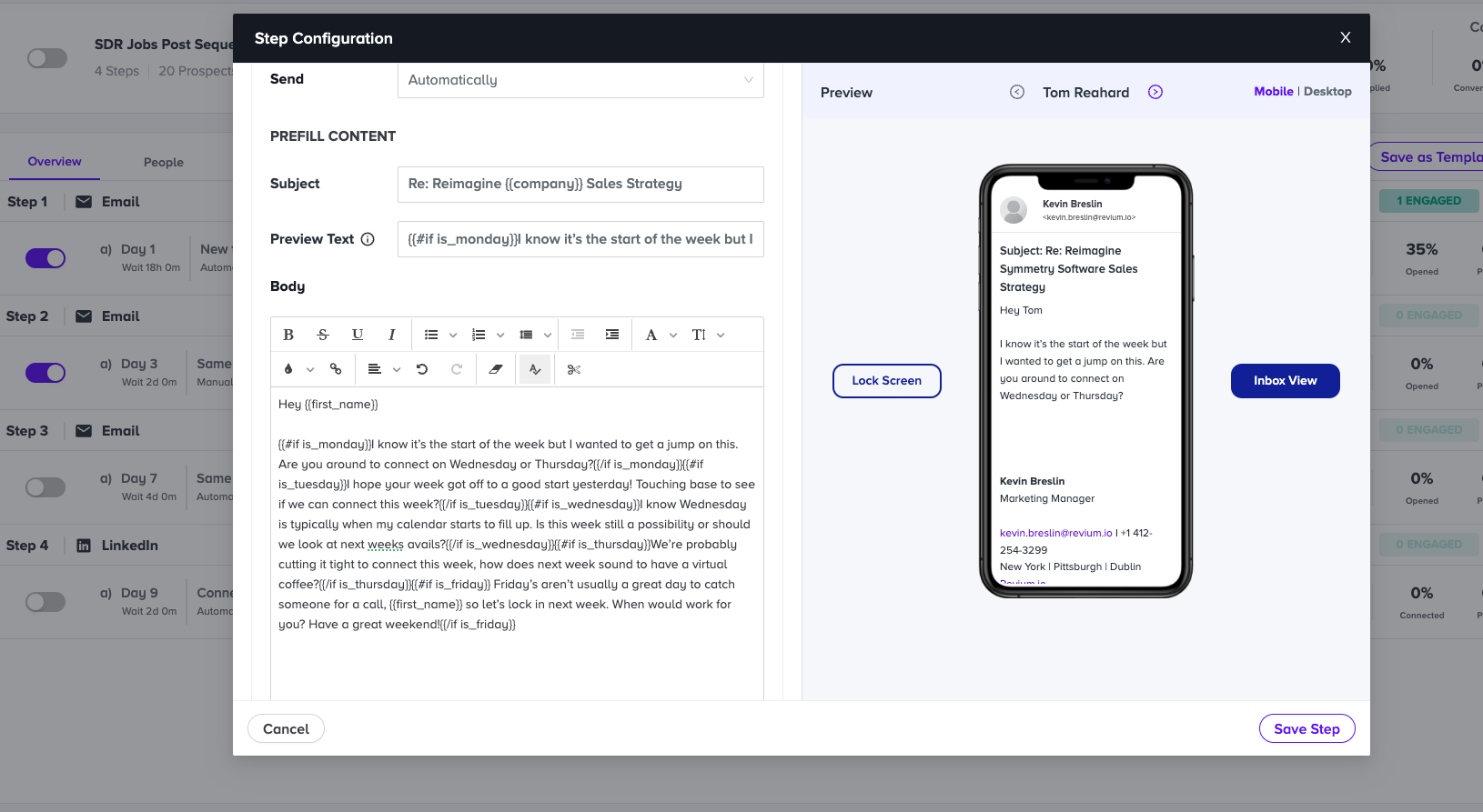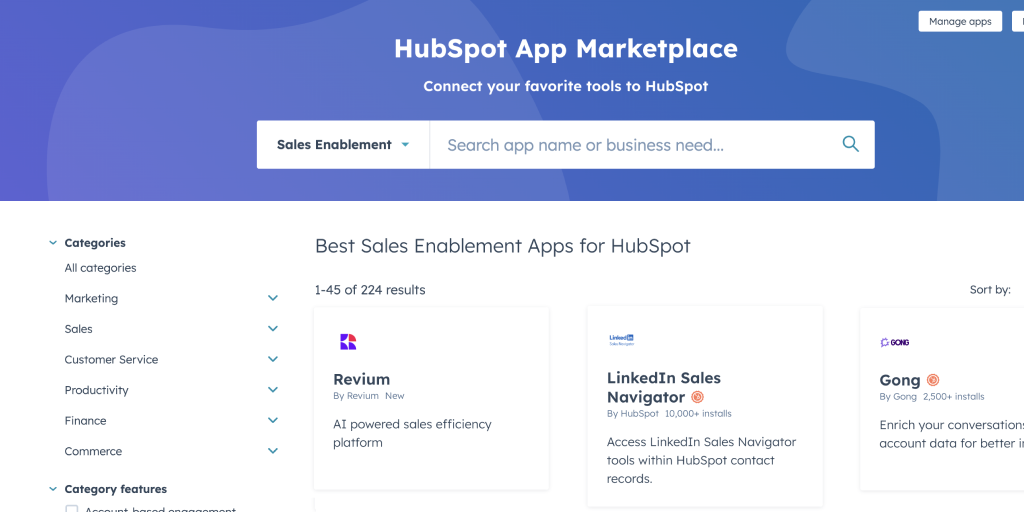In a world saturated with emails, how do you stand out from the crowd? The answer lies in personalization. Personalized cold emails can be the key to boosting your response rates and making meaningful connections with potential clients. By tailoring your outreach to address the specific needs and pain points of each individual recipient, you can create a message that resonates and compels action.
But personalization goes beyond simply inserting a recipient's name into the email body. It's about understanding their unique challenges, interests, and goals, and crafting a message that speaks directly to them. This level of customization shows that you've taken the time to research and understand their business, making your email more credible and relevant.
In this article, we'll explore the power of personalization and provide practical tips on how to personalize your cold emails effectively. From leveraging data and analytics to incorporating relevant details, we'll uncover the strategies that can help you make a lasting impression and drive engagement. So, buckle up and get ready to take your cold email outreach to the next level with the power of personalization.
The power of personalization in cold emails
Personalization is more than just a buzzword in email marketing. It's a fundamental aspect of successful outreach. When you personalize your cold emails, you show your recipients that you value their time and have taken the effort to understand their needs. This not only increases the chances of your email being opened but also makes it more likely that your recipients will respond positively.
Think about it - would you be more inclined to open an email that starts with "Dear Sir/Madam" or one that addresses you by your first name? Personalization creates a sense of familiarity and builds trust, making it easier for your message to cut through the noise and capture your recipient's attention.
But personalization goes beyond just using a person's name. It's about tailoring your message to their unique circumstances, pain points, and goals. By doing so, you demonstrate that you've done your homework and are genuinely interested in helping them solve their problems. This level of customization can make all the difference in building a meaningful connection and establishing a solid foundation for future discussions.
Benefits of personalized cold emails
The benefits of personalization in cold emails are numerous and far-reaching. Let's take a look at some of the key advantages that this strategy offers:
- Higher Open and Response Rates: Personalized emails have been shown to outperform generic ones in terms of open and response rates. When your recipients see that you've taken the time to craft a message specifically for them, they are more likely to engage with it and respond.
- Increased Relevance: By personalizing your cold emails, you ensure that your message is relevant to the recipient's needs and interests. This not only makes it more likely that they will read your email but also increases the chances of them taking the desired action.
- Improved Brand Perception: Personalization shows that you care about your recipients as individuals, not just as potential customers. This can greatly enhance your brand image and make your business more relatable and trustworthy.
- Better Conversion Rates: When your cold emails are personalized, you're more likely to convert recipients into leads or customers. By addressing their pain points and offering tailored solutions, you demonstrate that you understand their challenges and can provide value.
- Stronger Relationships: Personalization builds a foundation for stronger relationships with your prospects. By showing that you're willing to go the extra mile to understand their needs, you lay the groundwork for future interactions and potential collaborations.
Statistics on personalized cold emails
The power of personalization in cold emails is backed by solid statistics. Let's take a look at some key findings:
- According to a study by Experian, personalized emails deliver 6 times higher transaction rates compared to generic emails.
- Research by Aberdeen Group shows that personalized email messages improve click-through rates by an average of 14% and conversion rates by 10%.
- A report by Campaign Monitor reveals that emails with personalized subject lines are 26% more likely to be opened.
- In a survey conducted by Statista, 90% of respondents said that personalization is either "important" or "very important" in their email marketing efforts.
These statistics highlight the significant impact that personalization can have on the success of your cold email campaigns. By leveraging the power of personalization, you can not only boost your open and response rates but also drive higher engagement and conversions.
Understanding your target audience for effective personalization
To personalize your cold emails effectively, you need to have a deep understanding of your target audience. This requires thorough research and analysis to identify their pain points, goals, and interests. By gaining insights into their needs and preferences, you can tailor your message to resonate with them on a personal level.
Start by creating buyer personas that represent your ideal customers. These personas should include demographic information, job titles, industry, and any other relevant details. Use this information as a foundation for understanding their motivations, challenges, and aspirations.
Next, conduct market research to gather insights on industry trends, customer behavior, and competitor analysis. This will help you identify common pain points and opportunities for differentiation. Additionally, leverage social media, forums, and customer surveys to gather direct feedback and gain a deeper understanding of your target audience's preferences and needs.
By combining quantitative and qualitative data, you can create a comprehensive view of your target audience and develop personalized cold emails that truly resonate with them.
How to gather and utilize customer data for personalization
Gathering customer data is the key to effective personalization. The more information you have about your recipients, the better you can tailor your cold emails to their specific needs and interests. Here are some methods for gathering and utilizing customer data:
- Website Analytics: Use tools like Google Analytics to track visitor behavior on your website. Analyze metrics such as page views, time spent on site, and conversion rates to understand your audience's preferences and engagement patterns.
- Email Engagement Metrics: Monitor open rates, click-through rates, and conversion rates for your email campaigns. This data can provide insights into the content and messaging that resonates with your audience.
- CRM Data: If you have a customer relationship management (CRM) system in place, make use of the data it provides. CRM data can give you valuable insights into your customers' buying history, preferences, and interactions with your business.
- Surveys and Feedback Forms: Conduct surveys or use feedback forms to gather direct feedback from your audience. Ask questions about their pain points, preferences, and challenges to gain insights that can inform your personalization efforts.
- Social Media Listening: Monitor social media platforms to understand what your audience is saying about your brand and industry. Pay attention to their questions, concerns, and interests, and use this information to tailor your messaging.
- Third-Party Intent Data: This data originates from sources outside your own digital assets and is collected by intent data companies. For instance, information from industry publications, online communities, and other websites can identify prospects showing buying signals related to your product or services.
Once you've gathered customer data, segment your audience based on key characteristics and preferences. This will allow you to create highly targeted and personalized cold email campaigns that speak directly to the needs of each segment.
Crafting personalized subject lines that grab attention
The subject line is the first thing your recipients see when they receive your cold email. It's your opportunity to grab their attention and entice them to open your message. Personalizing your subject lines can significantly improve open rates and increase the chances of your email being read.
Here are some tips for crafting personalized subject lines that grab attention:
- Use the Recipient's Name: Include the recipient's name in the subject line to create a sense of familiarity. For example, "John, here's how we can help you double your sales."
- Highlight Their Pain Points: Address a specific pain point in the subject line to show that you understand their challenges. For example, "Struggling with low website traffic? We have a solution for you."
- Create a Sense of Urgency: Use time-sensitive language to create a sense of urgency and encourage immediate action. For example, "Limited time offer: Get 50% off our top-selling product."
- Personalize Based on Previous Interactions: If the recipient has interacted with your brand before, reference that interaction in the subject line. For example, "Thanks John for attending our webinar, here's a special offer for you."
- Segmentation-based Personalization: If you've segmented your audience based on specific criteria, tailor subject lines to each segment. For example, "Solution For e-commerce store owners like you John: Increase your conversion rates by 20%."
Remember, the key is to create subject lines that are relevant, personalized, and compelling. Experiment with different approaches and A/B test your subject lines to identify what resonates best with your audience.
Personalizing the email body and content
While subject lines are important, the body of your cold email is where you have the opportunity to provide value and create a connection with your recipients. Here are some strategies for personalizing the email body and content:
- Start with a Personalized Greeting: Address the recipient by their name and use a friendly tone to create a personal connection from the start. For example, "Hi Sarah, I hope this email finds you well."
- Reference Their Pain Points: Show that you understand their challenges by referring to specific pain points they may be facing. This demonstrates that you've done your research and are genuinely interested in helping them.
- Share Relevant Case Studies or Success Stories: Include examples of how your product or service has helped similar businesses overcome challenges or achieve goals. This provides social proof and shows that you have a track record of success.
- Tailor the Offer or Call-to-Action: Customize your offer or call-to-action based on the recipient's needs and goals. This makes it more relevant and increases the chances of them taking the desired action.
- Personalize Based on Previous Interactions: If the recipient has interacted with your brand before, reference that interaction in the email body. This shows that you value their previous engagement and makes the email more personalized.
Remember to keep your email concise and focused. Avoid generic and overly promotional language, and instead, focus on providing value and addressing the recipient's specific needs.
Using dynamic content and merge fields for personalization

Dynamic content and merge fields can take personalization to the next level by allowing you to insert specific details into your cold emails automatically. This saves time and ensures accuracy when personalizing your messages.
Here are some examples of dynamic content and merge fields you can use:
- First Name: Use merge fields to automatically insert the recipient's first name into the email body or subject line.
- Company Name: Customize your message by including the recipient's company name throughout the email.
- Industry-specific Information: Use dynamic content to insert industry-specific information or statistics that are relevant to the recipient's business.
- Previous Interaction: If the recipient has interacted with your brand before, use merge fields to reference that interaction and personalize your message accordingly.
- Geolocation: Insert location-specific information or references to show that you've taken their location into account.
- Condition Logic: Using conditional logic to tailor a message for specific reason such as according to the day of the week you are looking to set up a meetings eg I know it’s the start of the week but I wanted to get a jump on this. Are you around to connect on Wednesday or Thursday? This part of the script will only execute if it is Monday. It starts the week with an initiative to schedule a meeting for Wednesday or Thursday. It can be expanded to include all days of the week with different messaging specific to that day. You could also use this type of condition logic to speed up interactions based on job titles or other factors to save time and personalise more meaningfulling in the most time efficient manner.
Dynamic content and merge fields not only save time but also ensure that your personalization efforts are accurate and consistent. Experiment with different variables and test the effectiveness of dynamic content in your cold email campaigns.
Testing and optimizing personalized cold emails
To maximize the effectiveness of your personalized cold emails, it's important to test and optimize your campaigns. Here are some best practices for testing and optimization:
- A/B Testing: Test different subject lines, email body content, and calls-to-action to identify what resonates best with your audience. Use A/B testing tools to measure the performance of different variations and iterate based on the results.
- Segmentation Testing: Test different segments of your audience to identify the most responsive groups. This will help you refine your targeting and personalize your messages more effectively.
- Timing and Frequency: Experiment with different sending times and frequencies to determine when your emails are most likely to be opened and responded to. This may vary depending on your target audience and industry.
- Track and Analyze Metrics: Monitor key metrics such as open rates, click-through rates, and conversion rates to assess the performance of your personalized cold email campaigns. Use this data to identify areas for improvement and optimize your future efforts.
Remember, personalization is an ongoing process. Continuously test, analyze, and refine your strategies to ensure that you're delivering the most impactful and relevant messages to your recipients.
Conclusion: The future of personalization in email marketing
Personalization is no longer a luxury in email marketing; it's a necessity. In a world where inbox clutter is the norm, personalization is what sets your cold emails apart and makes them stand out. By understanding your target audience, gathering and utilizing customer data, and crafting personalized messages, you can boost your response rates and build meaningful connections with your recipients.
As technology continues to advance, the possibilities for personalization will only increase. From AI-powered email marketing platforms to predictive analytics, there are exciting developments on the horizon that will further enhance the power of personalization in email marketing.
So, embrace the power of personalization and take your cold email outreach to the next level. By tailoring your messages to address the specific needs and pain points of your recipients, you can create a lasting impression and drive engagement like never before. Start personalizing your cold emails today, and watch as your response rates soar.




